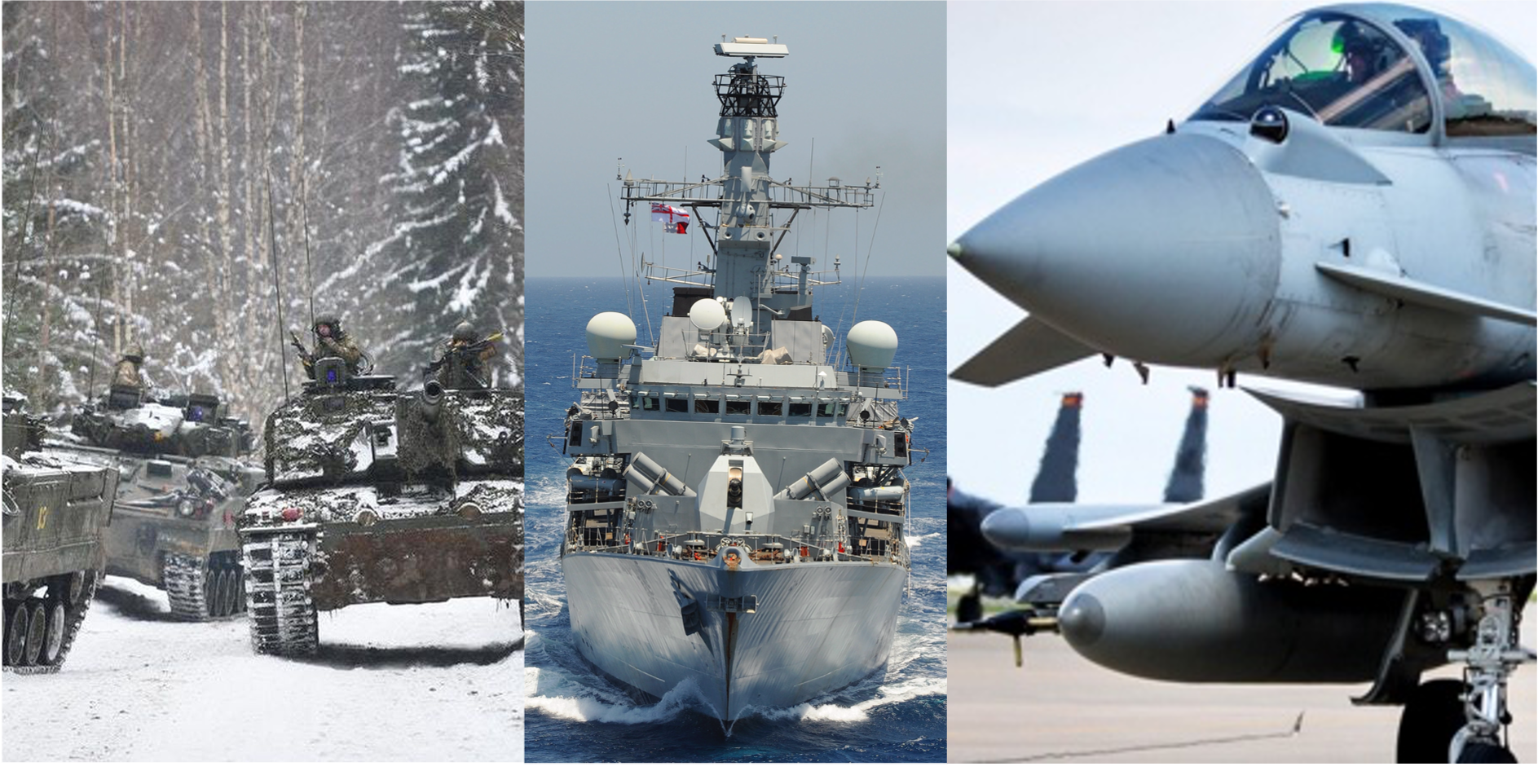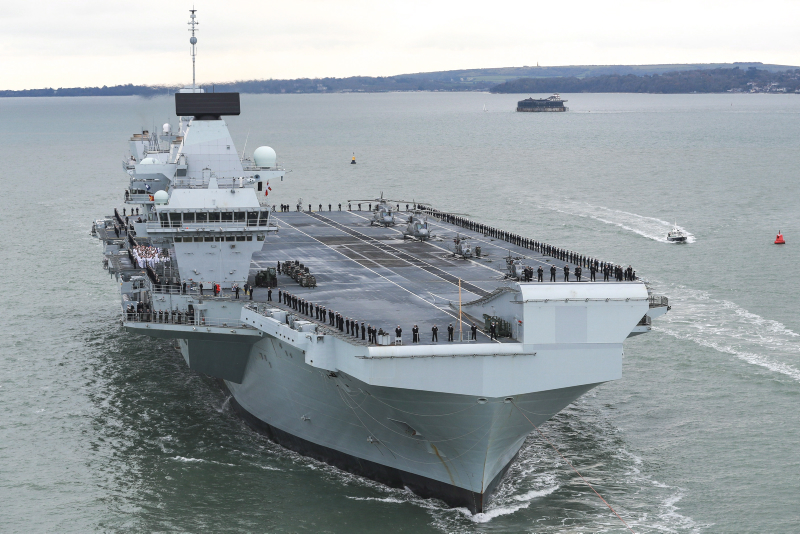Defence’s struggles to procure and maintain military capability within an agreed performance, time and cost envelope are an easy target for politicians. For example, in a recent House of Commons Defence Committee oral evidence session on the work of the Chief of the Defence Staff, Mark Francois (Conservative MP for Rayleigh and Wickford) lamented that “Nothing ever seems to change. The programmes still run late. They still go over budget. Everybody gets promoted. Nobody gets sacked. Billions of pounds are wasted. The armed forces go without the kit they need … the system is broken or near broken.”
In addition, as @onUKDefence has previously pointed out, the Prime Minster’s chief advisor, Dominic Cummings, regularly blogs his disdain for the military procurement system, branding it “a farce that enriches some of [the] worst corporate looters.”
So, why is procuring and maintaining military capability such a challenge, and is Defence as bad at it as the naysayers make out?
Is there a really a problem?
The House of Commons Public Accounts Committee has just completed an inquiry into Defence Capability and the Equipment Plan 2019-29. In its report, the Committee states that the MOD “has struggled to deliver key military capabilities, including equipment, to anything like their required timescales.” It notes that of thirty-two of the MOD’s highest priority programmes, one third are at serious risk of not being delivered on time and capabilities are reaching full operating capacity on average over two years late. The Committee also recorded its frustration at seeing “the same problems year after year and that, despite repeated department assurances that it will make progress, there appear to be no consequences for failure to deliver.”
So, it’s safe to say there is a problem.
Why is procuring and maintaining Military Capability so difficult?
As Louisa Brooke-Holland explained in a 2019 House of Commons briefing paper – An introduction to defence procurement – equipment acquisition is a complex process beset by financial and time constraints, as well as the political impact of legacy programmes. It is influenced by both strategic perceptions and domestic industrial priorities. The reasons for this are well known; indeed, in his 2009 Review of Acquisition Report, former Chief of Defence Materiel, Bernard Gray, noted that “acquisition reform, as it is generally known, is a subject only about five minutes younger than the acquisition of military equipment itself.”
In short, defence equipment takes a long time to develop and bring into service. Redefining requirements, which can regularly occur as a result of changing threat assessments, inflates costs, extends project times, and creates additional unplanned expenditure to support and maintain existing capability in service. Military operations can consume money intended for longer-term programmes, and often more programmes are planned than can be paid for, which overheats the equipment plan. Also, in some cases, staff lack sufficient business, project management and contract negotiation skills to ensure the MOD gets value for money.
Finally, as Matthew Powell, from the University of Portsmouth, recognises, the latest military hardware is invariably very expensive and exploiting innovation at the cutting edge of technology is full of risk for both supplier and customer. Throw in the political considerations of buying British versus multinational collaboration or simply buying off-the-shelf from an overseas supplier, and you quickly get to what Horst Rittel and Melvin Webber coined a ‘wicked problem‘.
What’s to be done?
There is no single action that will resolve all of the complex issues that adversely impact the procuring and maintaining of military capability. Moreover, any attempt to mitigate the complexity must be mindful of the following two points. In the first instance, an improvement in one aspect of the activity often leads to a regression elsewhere. For example, a streamlined approval process may reduce the scrutiny of public expenditure to an unacceptable level. Secondly, there will always be factors over which defence can never have control. An unforeseen technological breakthrough by a potential adversary could render a new weapon system obsolete the moment it enters service.
As a result, capability managers must rely on a serial disjointed incrementalism approach to their decision making (see The Challenges of Disinvesting on Military Capability). Small steps, that can be reversed or amended if required, are needed to improve different parts of the process. Clearly these changes must be subject to a degree of coordination at departmental level.
Of course, there is an abundance of transformation activity already in place across defence to improve all aspects of capability management. For example, at the tactical level, the defence delivery agents (i.e. Defence Equipment and Support – DE&S, Information Systems and Services – ISS, and the Submarine Delivery Agency – SDA) and the single services are investing heavily in training to ensure the latest portfolio, programme and project management techniques are in place. Above that, work is in hand to ensure MOD commercial officers are sufficiently trained and empowered so as not to be overmatched by their industry counterparts. And at the department-level, the government-wide system for major procurement project approvals is being adopted to help streamline the process.
Conclusion
As retired senior officers Michael Graydon, Jeremy Blackham and Jonathan Shaw have recently pointed out, over ninety per cent of defence programmes are brought in on time and budget. Furthermore, almost all major public sector procurement is bedevilled by cost escalation. Examples being the Hinkley Point nuclear reactor programme (up from an estimate of £16 to over £20 billion), Crossrail (up one and a half times to £18 billion) or the HS2 high speed railway project (initially estimated to cost £34 billion, but may yet end up costing over £100 billion).
To that end, any changes to defence’s current acquisition and support ways of working, proposed by Dominic Cummings or anyone else, cannot simply be a ‘big-hand, small-map’ solution. They must take into account what parts of the system are currently working satisfactorily and what change initiatives are already underway to improve those that are not. There is no doubt that improvements are needed to the way defence procures and maintains its military capability. However, high-level pontificating by high-profile figures who possess a little, dangerous knowledge, may well end up doing far more harm than good.






